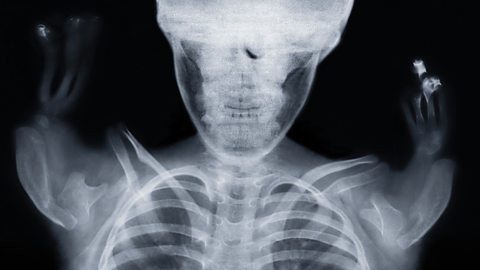The development and testing of new drugs
New drugA substance that can change chemical reactions in the body. need to be tested and trialled before doctors prescribe them and patients take them. This allows drugs to be checked for:
- safety
- effectiveness
- dosageThe most effective amount of drug needed to cure the disease.
| Check | Reason |
| Safety | Some drugs are toxic, and have other side effects that might be harmful to people |
| Effectiveness | Checks how well the drug cures the disease, or improves symptoms |
| Dosage | This varies, and has to be closely controlled, as too high a concentration might be toxic |
| Check | Safety |
|---|---|
| Reason | Some drugs are toxic, and have other side effects that might be harmful to people |
| Check | Effectiveness |
|---|---|
| Reason | Checks how well the drug cures the disease, or improves symptoms |
| Check | Dosage |
|---|---|
| Reason | This varies, and has to be closely controlled, as too high a concentration might be toxic |
Three stages of testing drugs
There are three main stages of testing:
Preclinical drug trials
- The drugs are tested using computer models and human cells grown in the laboratory. This allows the effectiveness to be tested and if the drug is safe to use on living cells. Many substances fail this test because they damage cells or do not seem to work.
Animal testing
- Drugs that pass the first stage are tested on animals. In the UK, new medicines have to undergo these tests. But it is illegal to test cosmetics and tobacco products on animals. A typical test involves giving a known amount of the substance to the animals, then monitoring them carefully for any side-effects.
Human clinical trials
- Drugs that have passed animal tests are used in clinical trials. They are tested on healthy volunteers to check that they are safe. The substances are then tested on people with the illness to ensure that they are safe and that they work. Low doses of the drug are used initially, and if this is safe the dosage increases until the optimum dosage is identified.
- placeboAn inactive substance made to resemble a drug for researchers to use as a control., inactive versions of the drug, are used. Volunteers are split into groups, some receive the drug and others receive the placebo. It is important they do not know which they are taking. This is called a blind trial. Often, a double-blind trial is carried out where the doctor giving the patient the drug is also unaware. Results from the groups are compared to ensure that the drug is having an effect and that any changes are not due the experimental trial process.
There are obvious benefits to testing drugs but some people consider drug trials to be dangerous and animal testing to be unethical.
The importance of drug testing - Thalidomide
Thalidomide is a medical drug that caused unexpected and serious damage to unborn babies in the 1950s and 1960s. Thalidomide was developed as a sleeping pill, but it was also thought to be useful for easing morning sickness in pregnant women. Unfortunately, it had not been tested for use in this way.
Birth defects
By 1960 thalidomide was found to damage the development of unborn babies, especially if it had been taken in the first four to eight weeks of pregnancy. The drug led to the arms or legs of the babies being very short or incompletely formed. More than 10,000 babies were affected around the world. As a result of this disaster, thalidomide was banned. Drug testing was also made more rigorous than before.
Thalidomide today
Thalidomide is now used as a treatment for leprosy and bone cancer. Its use is heavily regulated, however, to prevent a repeat of the problems it caused in the last century.

Learn more about drug discovery with Dr Alex Lathbridge.
Listen to the full series on ґуПуґ«ГЅ Sounds.
Learn more about drug discovery with Dr Alex Lathbridge.
More guides on this topic
- Field investigations - OCR Gateway
- Monitoring and maintaining the environment - OCR Gateway
- Feeding the human race - OCR Gateway
- Monitoring & maintaining health - Communicable diseases - OCR Gateway
- Monoclonal antibodies - Higher - OCR Gateway
- Plant disease - OCR Gateway
- Cancer and cardiovascular disease - Non-communicable - OCR Gateway
- Monitoring and maintaining health - Non-communicable - OCR Gateway
- Sample exam questions - global challenges - OCR Gateway